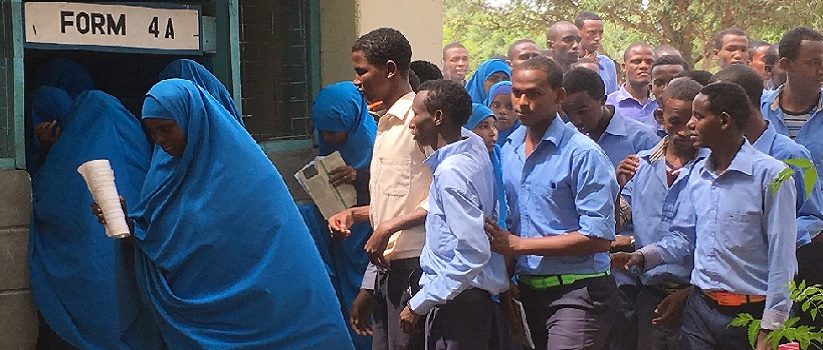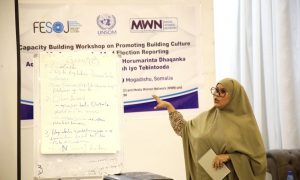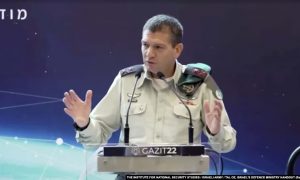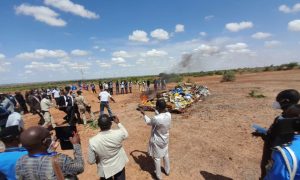
QUARTZ | June 28, 2016 – When a 15-year old Fatuma Abdi, a Kenyan Somali accompanied her parents and siblings to the Dadaab Refugee Camp in 2003, all that was on her mind was how they could survive the vagaries of life that had pushed them to the limits at home in Garissa. They made the decision to seek refuge in the camp after all their livestock was decimated by drought, depriving them of their main livelihood source. Struck by the loss, Abdi’s parents ushered the entire family of 10 into the camp, where their details were promptly captured in the refugee database.
At the time of going to the camp, her parents and five older siblings already had national identification cards, proof of their Kenyan citizenship. However, Abdi and her two younger siblings are yet to be issued with the vital document and this is what makes them very worried. Countless efforts to get the all-important document have failed, and now, they face the very real danger of being repatriated to Somalia, a war-torn country they know little about. The reality dawned on them when Kenyan officials announced in May this year that they will shut down the 25-year old camp.
“I never knew that by going to the camp, it would be so difficult for me to get a national identification card.” For many residents of Kenya’s arid and semi-arid northern region (pdf), basic amenities such as water, schools, health facilities and security are hard to come by. Likewise, conflicts over resources such as water and livestock are a common occurrence. The drought condition that is ever so ubiquitous in north eastern Kenya as well as sporadic insecurity cases have for ages pushed many families into refugee camps, with the hope of partaking of free food, water, safety and shelter provided by aid agencies.
“Most of us ended up in the refugee database because we innocently wanted to access necessities such as water, food, education and security. I never knew that by going to the camp, it would be so difficult for me to get a national identification card. I have tried at least five times to get it to no avail. Now, I am worried that I may be among the thousands of Somali refugees who will be repatriated to Somalia, a country I know nothing about,” Abdi tells Quartz.

Unlike Abdi’s family, 22-year old Abdinasir Hussein was pressed by his parents to make the pilgrimage to the camp. All they wanted was for him to get a good education at the camp like many other youth who had gone there to study. Before that, he had two options; traveling the 366-km distance from Garissa town (the scene of a deadly al-Shabab attack in April 2015 that left 148 people dead) to Nairobi’s Eastleigh estate predominantly inhabited by the Somali community or going to the refugee camp in the neighborhood for an ‘easy life’.
“I am a Kenyan. I was born in Kenya. My parents and grandparents were born in this country. We have never set foot in Somalia.” In 2008, accompanied by dozens of young people from the nearby Dadaab Township, he went to the camp. In retrospect, that was one of the best decisions he made. He was optimistic that a better future would beckon once he left the camp after completing his high school education. What he didn’t realize was that his details, which had been captured in the refugee database, would turn him into a persona non grata in Kenya, at least for now. Even so, he is adamant he will spend his life in Kenya, a country of his birth.
“I am a Kenyan. I was born in Kenya. My parents and grandparents were born in this country. We have never set foot in Somalia, neither do we know how that country looks like. The only likeness we have with the Somali refugees at the camp is the language we speak,” Hussein tells Quartz.

Ethnic Somalis, who predominantly occupy the expansive arid and semi arid regions in north eastern Kenya, are not strangers to political, social and economic marginalization. For decades, they have been sidelined from government jobs and critical services such as healthcare, education and water. Development projects that should have ideally improved the living conditions in their region have remained a pipe dream for many years.
The al-Shabaab menace has made life even more difficult for them, as they are oftentimes regarded as sympathizers or seen to be harboring the terrorists. This has put them at a heightened risk of discrimination and human rights cruelties. The region has also experienced a fair share of military incursion keen on not only wiping out the al-Shabaab, but also suppressing radicalized youth. Such marginalization has made Kenyan-Somalis identify more with their kin in Somalia than with other Kenyans. It will take a lot of time and effort to change that.
A study (pdf) commissioned by Kenyan officials in collaboration with Norway and Denmark in 2010 says the habit of locals registering as a refugees in camps is widespread. It is not considered particularly difficult to obtain a refugee card as it is seen as a logical survival strategy for anyone living in the host area.
“Although holding a Kenyan ID card and a refugee ration card at the same time has become more difficult due to biometric registration, many host community members have made a choice between holding one of the other,” the study says.
“For many, holding the ration card makes more sense as it provides food (which converts to income) whereas a national ID card offers less tangible rights. It is also clear that many do not believe that holding a ration card will in fact deny them of Kenyan identity, as they perceive the Kenyan registration system to be corruptible.”
To government officials, Hussein and Abdi are among the 350,000 refugees from Somalia whose time at the world’s largest refugee camp has come to an end. Local authorities, who are predominantly Kenyan Somali, have put the figure at about 100,000, although other sources put the figure at about 30,000. With growing trepidation that they may end up becoming refugees in Somalia, many of the young people could become easy targets of recruitment into the al-Shabab militia, wreaking more havoc in a region already hurting from attacks by the Al Qaeda-allied terrorist group. Somali elders have repeatedly pleaded with government officials to issue disgruntled youth from the region with identity cards to enable them lead their lives normally like other Kenyans.
“What I know is that I am not a refugee, but it’s so painful when the government thinks that I am not a Kenyan,” says Abdi. She adds that at the camp, young people are frequently arrested and harassed by security agencies. To avoid the harassment, they have to stay indoors most of the time pondering what would become of them next.
Many young people at the Dadaab Refugee Camp face the catch-22 situation Abdi and Hussein are faced with. When the Kenyan government announced it would close the camp and repatriate all the refugees back to Somalia, president Uhuru Kenyatta assured Kenyans appearing in the refugee database that they would not be repatriated to Somalia. Individuals with details in the refugee database would be identified, deregistered from the databank and issued with identification cards. But, those that Quartz spoke to said they are yet to receive any visit from government officials to assure them they would be issued with IDs.
“It is important to understand that not all refugees in Dadaab are Somali but they will suffer the same fate as those being returned home.”
On June 13, Amnesty International said it had received “reports of arrests, detention and harassment of refugees by the police in many parts of Kenya since the government’s plan to close the camp was announced in May”. The arrests have often targeted Somalis who do not have ID cards or passports to show they are in the country legally. Kenya has been a target of repeated attacks by the al-Shabab, a militia group based in Somalia, which recruits young people to join its ranks. In April 2014, security agencies in Kenya deported 82 Somalis and rounded up hundreds of others and huddled them in a makeshift camp at the Kasarani Stadium for failing to produce proper documentation. This was part of a crackdown on what authorities said were illegal aliens from Somalia, whom it accused of planning to carry out terrorist attacks in the country. Hussein and Abdi fear this is the same fate that could befall the genuine Kenyan Somalis in the refugee database when the camp is finally shutdown by November this year.
With the day of reckoning fast approaching, World Vision’s East Africa regional humanitarian and emergency affairs director, Christopher Hoffman told Quartz: “I believe that this issue will not be terribly serious and that the government of Kenya will need to ensure that it provides all the rights and privileges to its citizens. The issue of those that are legally Kenyan being affected by this move is directly correlated to the government of Kenya’s ability to identify and assist its citizens.”
Now, that even the United Nations has accepted and now supports Kenya’s decision to close the camp, what Hoffman is concerned about now is the aftermath of the repatriation process on the refugees being sent away. The unexpected decision to close the camp is likely to spiral into an even worse humanitarian crisis than is the case already.
“It is important to understand that not all refugees in Dadaab are Somali but they will suffer the same fate as those being returned home. To make matters worse, more than half of those to be affected are children who do not have any coping mechanisms to assist them through this tumultuous time. They will most likely be severely affected by these severe and abrupt changes to their lives,” Hoffman said.
But, as Abdi and Hussein wait patiently for the day when the sun will finally set on Dadaab Refugee Camp, their worst fear yet is that they may be stateless, with nowhere to go to.
.
.
_____________________
_____________________________________________________________________________________
Xafiiska Wararka Qaranimo Online | Mogadishu, Somalia
_____________________________________________________________________________________Advertisement
_____________________________________________________________________________________







